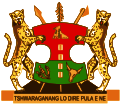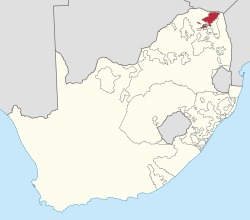
This article lists the leaders of the TBVC states, the four Bantustans which were declared nominally independent by the government of the Republic of South Africa during the period of apartheid, which lasted from 1948 to 1994. Their independence was not recognized outside South Africa.
Contents
- Transkei
- Heads of state
- Heads of government
- Timeline
- Foreign ministers
- Bophuthatswana
- Heads of state and government
- Foreign ministers 2
- Venda
- Heads of state and government 2
- Timeline 2
- Foreign ministers 3
- Ciskei
- Heads of state and government 3
- Timeline 3
- Foreign ministers 4
- See also
- Notes
- References
- External links
The bantustans with nominal independence were namely: Transkei (1976), [a] [1] Bophuthatswana (1977), [b] [2] [3] Venda (1979) [c] [4] and Ciskei (1981), [d] [5] hence the abbreviation TBVC.
The TBVC states were reintegrated into South Africa in the wake of the first post-apartheid general election in April 1994. [6]
















